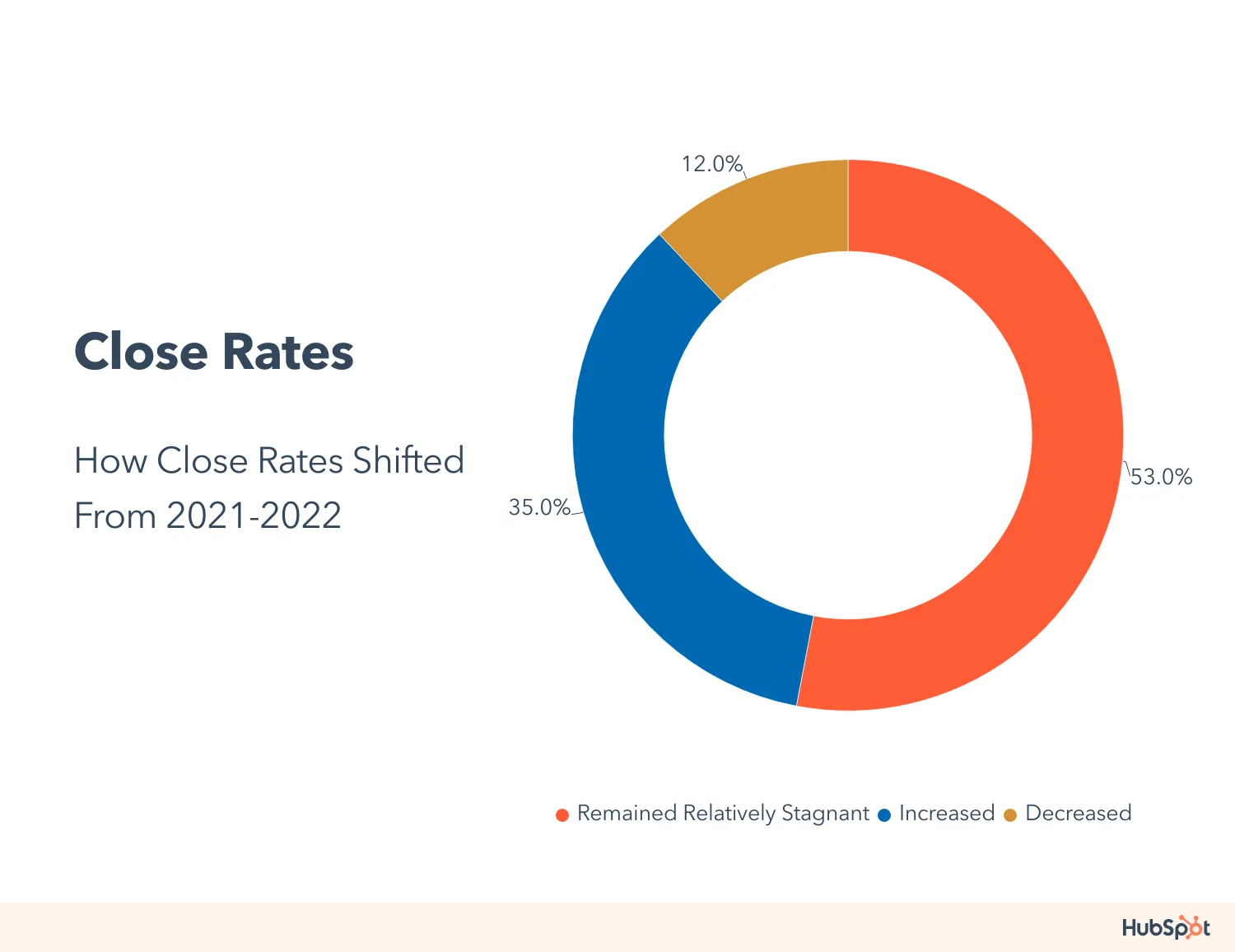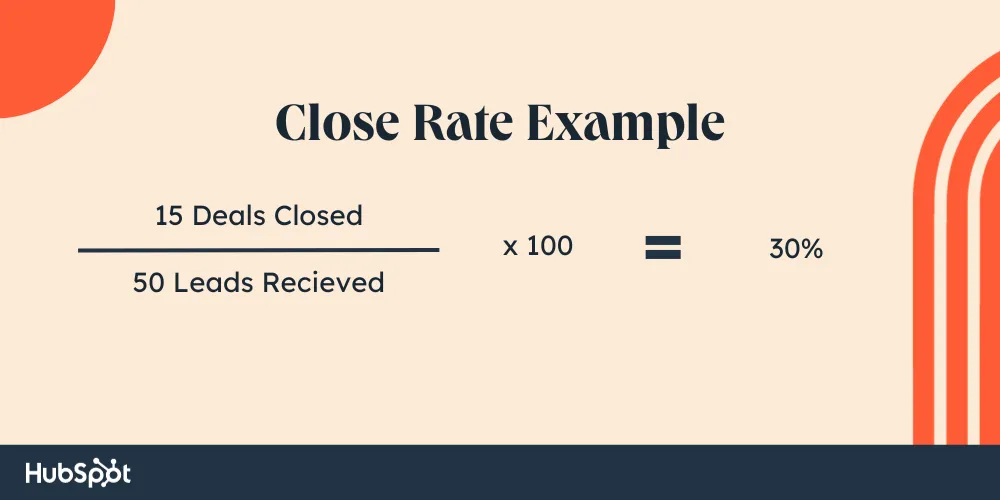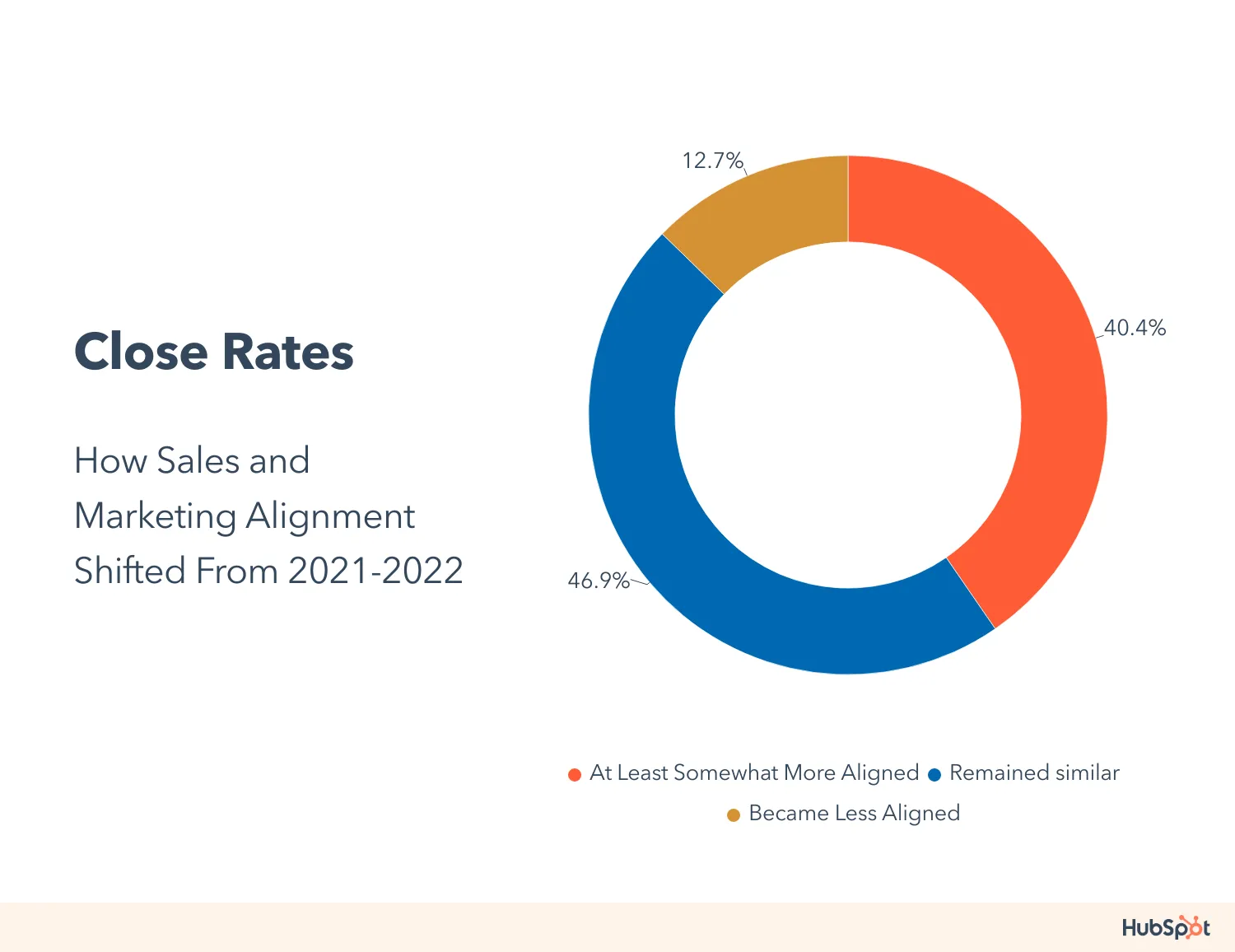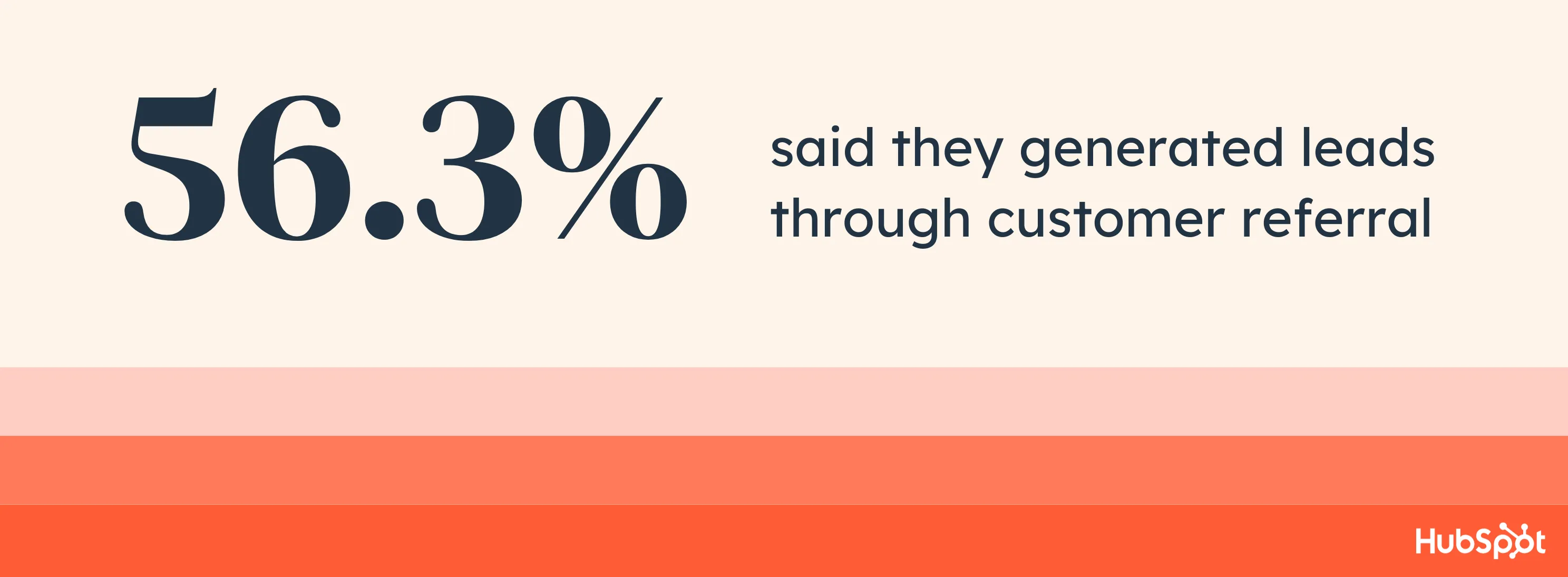Close rates are one of the most vital metrics for keeping tabs on both individual reps' efficiency and the overall health of a sales organization. That’s why we conducted a survey of over 1,000 sales professionals to find out how close rates are shifting.

Our study showed how the metric trended in the broader field from 2021 to 2022. Here, we'll go over some of those figures and draw some conclusions as to why the tides are shifting.
Let's dive in.
Table of Contents
- How Close Rates are Shifting in 2023 [New Data]
- How to Calculate Close Rate
- What is a good close rate in sales?
How Close Rates are Shifting in 2023 [New Data]
In HubSpot's recent survey of over 1,000 sales professionals, 53% of respondents said their close rates remained relatively stagnant from 2021 to 2022. Meanwhile, 35% reported an increase in close rate, and 12% reported a decrease.

Those figures are mostly reassuring for sales reps. They indicate that closing is generally easier than or similar to how it has been in recent years. But how can we account for that positive trend? Well, before diving into the numbers, it's important to understand the nature of close rates and the factors that can impact them.
You can use the HubSpot sales reporting tools to keep track of your closing rates and sales volume.
How to Calculate Close Rate
As I touched on at the beginning of this article, close rate is one of the purer, more straightforward ways to gauge performance. You can evaluate this metric on both the individual level and organization-wide.

You can calculate the figure by dividing the number of deals a salesperson closes by the number of lead opportunities that rep has been fed during a given timeframe. Then, multiply your outcome by 100, so you can see a percentage.
Let’s try an example. Let’s say I receive 50 leads in a quarter and close 15 deals. I would have a close rate of 30% for that period.

Pro tip: Get a good grasp on the calculations before looking into automated systems. This will help you understand how these stats work.
Once you feel comfortable with calculating close rates, consider using a tool to make the process easier. HubSpot's sales reporting software provides you with an easy way to track your day-to-day stats.
What is a good close rate in sales?
There's no single gold standard for an ideal close rate every business should strive for. Average sales close rates can vary pretty widely by industry. For instance, biotech has an average industry close ratio of 15%. The software industry has one of 22%, and the finance industry has one of 19%.
However, the average close rate across industries is around 20%.
There are a few primary factors that impact close rate — one of the most important being lead quality. Let's take a look at trends that might have impacted that key element in the past year.
Marketing and Sales Alignment
Lead quality might have the most immediate bearing on close rate. If a salesperson is fed non-viable, poorly qualified leads, they're facing an uphill battle. You can only do so much with a prospect who lacks the need, interest, budget, or qualities required to buy.
This particular factor can be tricky for sales teams. A significant portion of maintaining a stream of steady, sustainable leads lies outside of the sales organization. These teams typically lean heavily on marketing departments to handle that aspect of the business.
That's why sound alignment between sales and marketing is so crucial. According to our survey, alignment between those departments is either holding steady or on the rise at most companies.
Of our respondents, 40.4% said that sales and marketing at their companies have become at least somewhat more aligned in 2022. 46.9% said alignment has remained similar year over year, and only 12.7% said their departments have become less aligned since 2021.

In our survey, 25.9% also cited improvement in lead quality as one of the biggest benefits of well-aligned sales and marketing departments — the third most popular benefit after increased revenue and improved customer experience.
And finally, 41% of respondents describe the leads they get from their marketing teams in 2022 as high-quality. While 45% say the leads are average, and only 14% say they're low-quality.

So, what does this data mean? Well, for one, it shows that several sales orgs are better aligned with their marketing departments this year than they were in 2021. Proper alignment between those sides of the business is known to improve lead quality.
Taken together, all those facts seem to indicate that close rates either holding true or improving year-over-year might have something to do with marketing and sales departments getting more “on the same page” from 2021 to 2023.
Existing Customer Relationships
Another key factor impacting lead quality and close rate is existing customer relationships — specifically as it relates to evangelizing. Existing customers are arguably the most effective resource for generating productive leads for sales departments.
Of our respondents, 56.3% said they generated leads through customer referrals — making it the most popular lead-generation method among salespeople in 2022. In fact, 66.5% also cited customer referrals as the channel that produces the highest quality leads.

So, it makes sense that a significant number of sales reps shifted focus from acquiring new customers to retaining existing ones. In the survey, 26.7% of our respondents cited focusing on existing customers more than new ones as being a major shift in the sales landscape from 2021 to 2022.
Of those respondents, 61.8% said the trend of focusing on existing customers over finding new ones had the biggest impact on their role over other changes in sales as a field.
That kind of focus on retention and serving existing clientele might have made for more satisfied customers and, in turn, more high-quality leads from referrals. This trend could have had some sway over the solid year-over-year close rate figures we documented.
Close Rates Today
Ultimately, several factors are likely playing into how and why the close rate across most industries appears to be holding true or trending up. If our results are any indication, it would appear that improved sales and marketing alignment and a focus on bolstering existing customer relationships are playing a part.







![All the Bases Your Kickoff Meeting Needs to Cover [Template Included]](https://blog.hubspot.com/hubfs/Kickoff%20Meeting%20%281%29.jpg)



